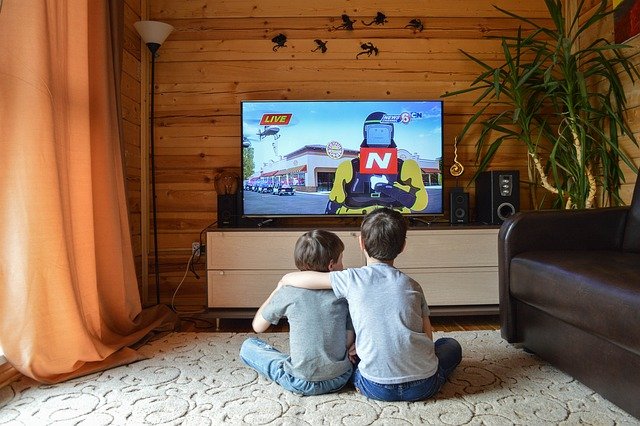|
Getting your Trinity Audio player ready...
|
To be honest, screen time rules modern parenting most of the time. Cartoons, instructive, games, YouTube, and more kinds abound on screens. Furthermore, completely cutting off screen time is not necessary or realistic even if everyone wishes to cut back on it.
The secret is a reasonable approach that actually supports families.
If you have ever questioned
- How much too much screen time is?
- Given my child’s age, what realistic screen time restriction should be?
- How can I create screen time restrictions without always running up conflict?
- Does anyone have any actual screen-time recommendations?
You’re in the right spot. This parent-tested guide will walk over age-appropriate screen time plans, reasonable rules, and helpful tips to develop a good relationship with screens for children between the ages of two and ten.
How much too much screen time is? Expert Suggestion
The American Academy of Paediatrics (AAP) has developed these recommendations regarding screen time
Age-recommended screen time
- In less than eighteen months, try to avoid displays.
- Eighteen to twenty-four months, restricted, premium material with a custodian
- Two to five years, one hour every day with reference tools.
- More than six years have gone. Based on the degree of exercise, sleep, and health, consistent limitations
To tell the truth, though, life is occurring. Children prefer their screens, parents need breaks. Instead of aiming for “zero screen time,” the specific needs of your family should direct intentional, controlled screen use.
Parents’ Two to Ten Year Tested Screen Time Schedule

Children’s sociable, active, and engaged state is maintained while screen use is under control by this appropriate, flexible timetable.
Ages 2–3: Restricted but structured screen time; daily limit: 30 minutes to one hour
- Content Focus: Interactive and educational (PBS Kids, Sesame Street, Super Simple Songs)
- Parent Involvement: Watch together & participate in conversation
- Best Times for Screens: Following meals, on vehicle trips, or as part of a wind-down schedule
- See screens as tools, not as a nanny. After seeing an episode of “Daniel Tiger,” for example, talk about emotions from the show
Age 4–5: Clearly define your boundaries
- Daily Limit: One hour on weekdays, up to one and a half hour on weekends
- Perfect Time for Screens: Following school activities, before supper, or following outside play
- Focus on Content: Interactive and instructive apps
- Steer clear of devices before bed:blue light might mess with sleep. Instead, use nighttime for peaceful music or storytime
Age 6–7: Promotion of Digital Responsibility
- Daily Limit: one to one and half hours on school days, two hours on weekends
- Device-Free Zones
- Content Focus: age-appropriate learning games & creative apps ( Minecraft Creative Mode, ScratchJr., Book Creator)
- Not one screen in the dining table, the bedroom, or during family time
- After schoolwork, before supper, or during assigned “tech time,” Establish restrictions with timings. Many kids object to reducing screen time, but a visible timer—like a sand timer or countdown clock—helps changes go more easily
Ages 8 through 10: Independent Balanced Screen Use
- Daily Limit: Up to three hours on weekends, one to two hours on school days
- For screens, ideal times are those of family time, outdoor recreation, or housework
- For STEM-based games, coding apps, and instructive YouTube channels—at least one screen-free evening each week (family game night, outdoor excursion, reading time) for @National Geographic Kids, TED-Ed, Tynker
- Incorporate a “Tech Ticket” system. Children get a set amount of “tech tickets” each week and decide when to apply them. This advances responsibility and self-control
Guidelines Regarding Realistic Screen Time
Establishing screen time rules is easy; the challenge is often enforcing them. These rules checked by parents will be valuable.
1-Avoid screens during meals
This strategy advocates sensible eating and family communication.
Decide as a family rule that screens shouldn’t be on during dinner.
Have a “phone basket” where all of your devices live before dinner; use meals to highlight daily events or initiate intriguing discussions.
2-Bedrooms without screens
It reduces evening issues and helps to enhance sleep quality
How should one accomplish this?
- Set for young people a “screens out by 8 PM” rule
- Wake up with an alarm clock instead of medications or a phone
- Have kids charge things outside their bedroom overnight
Why should you set a timer for screen time?
This helps kids to walk away from devices without confrontation.
How might one implement it?
3-Track with a digital countdown or kitchen timer
- Give a five-minute warning before the screen turns off
- Extra outside play or story time can honor fluid transitions
4. Earn Your Screen Time
Why? increases responsibility and equilibrium
How best to implement this?
- Screen time comes after homework, chores, and outside play
- Create a basic checklist. “Finish homework ← half an hour of screen time’’
5-Balance Screens with “No-Tech” Activities
For what reason? Children need movement, creativity, and in-person contacts.
Method of Use
- Replace your screen time “for every 30 minutes of screen time, do 30 minutes of play, reading, or outdoor fun”
- Family Activity Nights: Swap one evening each week for a no-tech hobby (baking, board games, hiking)
Overcoming Screen Time Wars Without Losing Your Mind
Children will object even with properly specified rules. This is how one should handle usual screen time issues.
First Battle: “But I Need More Screen Time!”
- What to Say: “You love playing; we can be healthy even if screens have limits. Let us pick another fun activity to do together
- What to Do: Suggest to them a fascinating non-screen pastime (Puzzles, LEGOs, crafts)
Five More Minutes: Battle 2
- What to say: “I hear you, but screen time is over. Let’s set when you could have it again
- What to do: Show kids their last time on a visual timer?
Third battle: Meltdowns when screens are taken away
What to say
- “Although our policy is no screens after dinner, I realize this is frustrating. Let’s browse a book together
- One should follow the rule exactly without a second thought. Your fewer meltdowns over time the more consistent you are
Interesting and Emotional Stories
First Story: Sarah Took Back Time for Family from Screens
A mother of three (ages 4, 7, and 9), Sarah never dreamed that screen time would cause such trouble in her home. But one evening she looked around the dining table and saw everyone—including her husband—fixated on their gadgets.
“It certainly struck me.” Not conversing among each other were my kids. We were not laughing as we usually would have. Dinner used to be our time to get in touch, but these days it was just another occasion when devices ruled.
Driven to make things better, Sarah decided on a simple rule: no screens during meals. First objections come from her children. They moaned, begged, and even behaved erratically. She still held great strength, though.
“The first few days were not particularly good. My seven-year-old was baggy as my nine-year-old kept looking at her iPad. But on the third night, something amazing happened: my youngster started remembering his schoolday activities. Laughing, my daughter enquired as to My husband also spoke. And we started a true dialogue precisely like that.
Standard suppers in Sarah’s house nowadays are screen-free ones. One small change brings in each other’s company stories, word games, and even fun.
Lesson: Setting limits calls more on reclaiming real family events than on punishment
Second Story: Meltdown of Jake and Enchantment of the “Tech Ticket” System
Six-year-old Jake delighted in utilizing his tablet for gameplay. His mother, Amanda, was not disturbed until screen usage started to create regular arguments.
“Just five more minutes, Mom! Every night it was the same. Then, before I knew it, five minutes stretched into thirty, and switching off the television started a full-fledged outburst.”
Amanda knew she had to act. Reviewing screen time strategies, she introduced the “Tech Ticket” System
- Jake picked three daily 30-minute tech tickets
- He could choose when to use them—but without screen time after they disappeared. Reading, outdoor play, or housework could all earn extra tickets
Jake first tested the system. He begged more and used all three tickets before noon. Amanda, however, stayed put.
By the third day, something changed. Jake started saving his tickets for later in the day. Not something he had done in months, he even chose to play outside instead of watching films.
A week later the meltdowns disappeared, and screen time was under control at last.
Lesson: Giving children power inside well-defined limitations helps them grow in self-discipline—without constant fighting
Establishing the Correct Balance
Although both Sarah and Amanda battled screen time, they adjusted their family’s calendar by setting acceptable limits and being consistent.
Amanda reclaimed quality family time by having Jake utilize tech tickets to manage his screen use, therefore preventing daily meltdowns.
Though every family is different, the secret is to find what fits you and stick to it.

Thought notes: Making a Good Screen Time Plan
Not the opponent is screen time; lack of organization is. Well-managed, screens may be entertaining, educational, and fun without dictating your child’s life.
Important lessons are
- Utilize screens deliberately—quality above quantity; regulate daily screen time depending on age
- Encourage peace between useful interests and technology
- Maintaining your standards helps to avoid confrontation
- Lead by example; kids pick up what they see!
Children who have a structured, flexible screen time routine will grow to have a lifetime of excellent digital habits.
Has your breakthrough with screen time come? Tell your story in the remarks down below.














